
Imagine you’re a small business owner, juggling countless responsibilities and trying to make your brand stand out.
Traditional marketing methods seem costly and often miss the mark, leaving you searching for a breakthrough.
One evening, you come across a story about a startup that achieved massive success – not through ads, but by creating a simple tool that solved a common problem.
This approach, known as “Engineering as Marketing,” transformed their technical skills into a powerful marketing strategy, propelling them into the spotlight.
Could this be the game-changer your business needs?
In this post, we’ll explore how Engineering as Marketing can help you leverage your expertise to drive growth, engage your audience, and take your business to new heights.
What is Engineering as Marketing?
Engineering as Marketing is an innovative growth strategy where businesses leverage their technical expertise to create tools, resources, or interactive experiences that provide value to potential customers.
Instead of focusing solely on traditional digital marketing methods, this approach uses the skills of engineers to build something that directly engages the audience and solves a problem they face.

Think of it like this: Imagine a small software company that specializes in productivity tools.
They want to attract more customers but don’t have a large budget for traditional marketing.
Instead of spending money on ads, they decide to create a simple, yet powerful, free tool that helps users manage their daily tasks more efficiently.
This tool could be something like a customizable daily planner or a time-tracking widget. It’s not a full-fledged product but a helpful utility that potential customers can use immediately.
The tool is made available on the company’s website, and users can access it for free. As more people start using the tool and sharing it with others, the company gains visibility.
The tool itself becomes a gateway to the company’s main products, drawing in users who might be interested in upgrading to more advanced solutions.
Here’s why this approach works:
Immediate Value: The free tool offers immediate value to users, solving a specific problem they have.
Lead Generation: To access additional features or save their data, users might be asked to sign up with their email, turning them into potential leads.
Brand Authority: By offering a useful tool, the company establishes itself as a thought leader and expert in its niche, building trust with its audience.
Organic Growth: Satisfied users are likely to share the tool with their network, creating a ripple effect that increases the company’s reach without significant marketing spend.
Few Real-World Examples of Engineering as Marketing
In this section, we’ll explore six real-time examples where companies have successfully implemented Engineering as Marketing.
These examples demonstrate how different businesses have used their technical expertise to create valuable tools and resources that not only solved problems for their target audience but also drove significant growth and brand recognition.
1. HubSpot’s Website Grader
HubSpot, a leading inbound marketing and sales platform, created the Website Grader tool to help businesses evaluate their website’s performance.
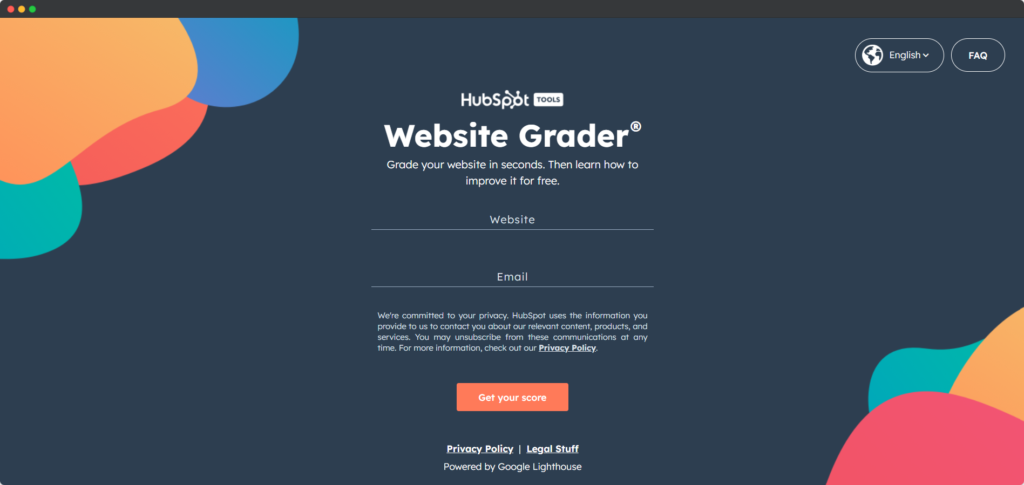
Users simply enter their website URL, and the tool analyzes key areas like performance, mobile optimization, SEO, and security.
The tool offers actionable insights and a score, encouraging users to improve their websites.
This free tool has generated thousands of leads for HubSpot while establishing them as an authority in the digital marketing space.
2. Grammarly’s Writing Assistant
Grammarly offers a free writing assistant that checks grammar, spelling, and punctuation errors in real-time.
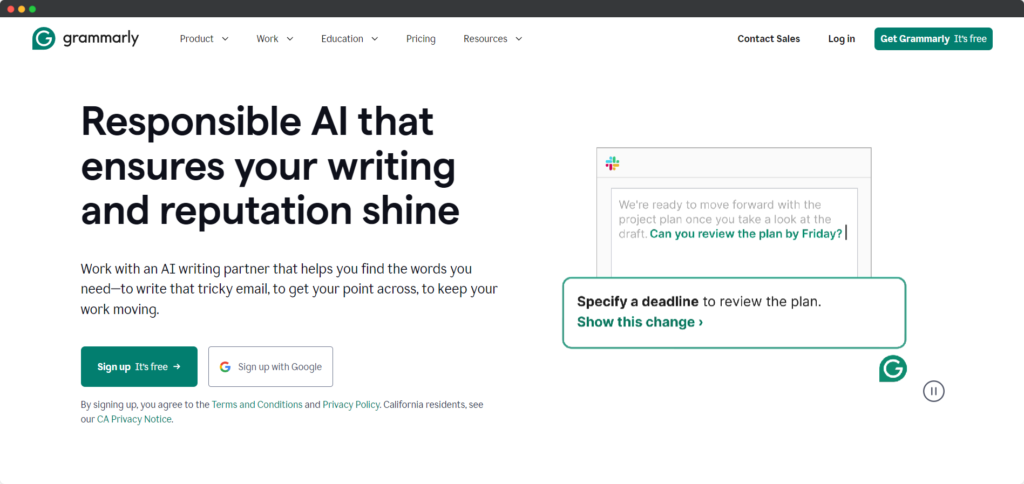
By integrating its tool into popular platforms like Google Docs, social media, and email, Grammarly became indispensable to millions of users.
Grammarly offers the tool as a Chrome browser extension, desktop app, and as a mobile app.
The free tool provides value to users daily, leading many to upgrade to the premium version for more advanced features, showcasing the power of a freemium model driven by Engineering as Marketing.
3. Free Antivirus Software from Cybersecurity Companies
You may have used (or using) a free antivirus software on your desktop or laptop, from notable cybersecurity companies like Avira, Avast, Kaspersky, ZoneAlarm, or Bitdefender.
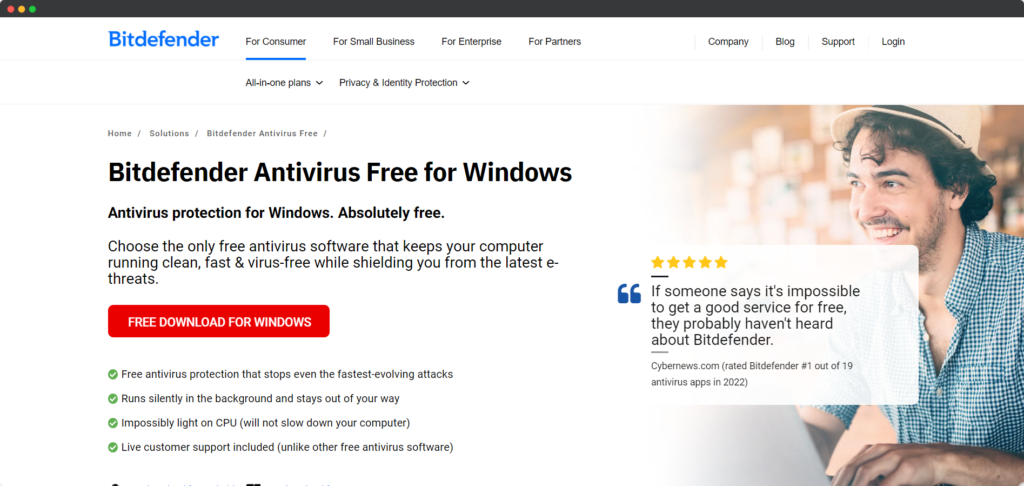
These companies use a freemium model to attract users by offering a free version of their respective cybersecurity software solutions.
Their downloadable, free antivirus software provides essential protection against viruses, malware, and other online threats.
By delivering value upfront, above-mentioned cybersecurity firms can successfully draw a larger user base, many of whom eventually upgrade to premium versions of more advanced security features.
This strategy not only increases brand visibility but also establish these firms as a trusted name in the cybersecurity domain, driving growth through a combination of free and paid offerings.
4. Free Credit Score Monitoring from Credit Karma
Credit Karma is a personal finance company (under Intuit) that offers free credit scores, credit reports, and financial tools to help users monitor and improve their financial health.
The company provides a free credit score monitoring service that provides users with access to their credit scores, credit reports, and personalized financial recommendations.
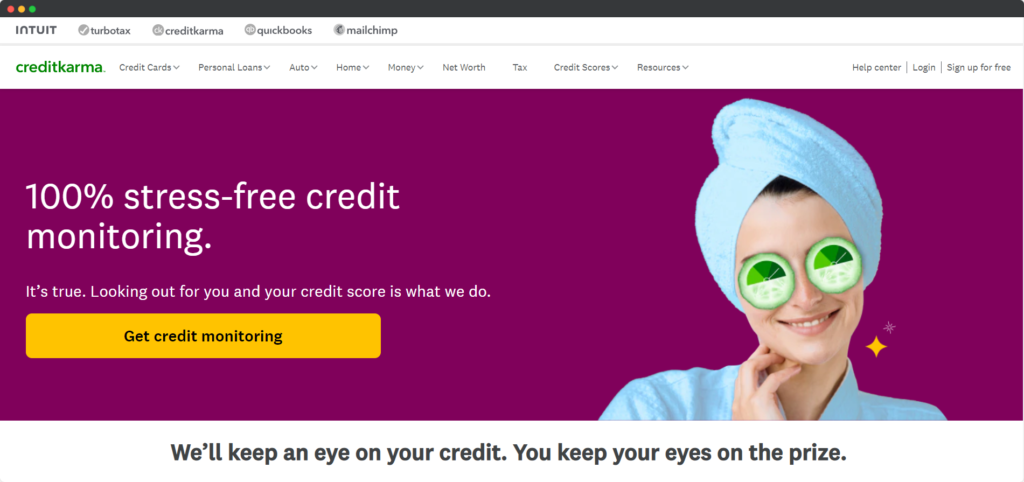
By giving users valuable insights into their credit health at no cost, Credit Karma attracts millions of users who are interested in improving their financial standing.
In return, Credit Karma generates revenue by recommending financial products, such as credit cards and loans, that are tailored to the user’s credit profile.
This strategy has allowed Credit Karma to build a massive user base and become a leading name in personal finance, all while offering a free and useful tool that drives both engagement and growth.
5. Free Educational Platform by Zerodha
Zerodha, India’s largest stock trading and investing firm, leveraged its educational platform, Zerodha Varsity, as an effective Engineering as Marketing strategy.
Zerodha Varsity offers free, in-depth courses on various aspects of investing and trading, providing valuable financial education to both beginners and experienced traders.

By offering this comprehensive resource for free, Zerodha not only attracts potential customers but also builds trust and establishes itself as an authority in the financial industry.
This educational approach drives user engagement and loyalty, ultimately leading to an increase in the adoption of Zerodha’s stock trading and investing platforms.
6. MyFitnessPal’s Free Calorie Counter
MyFitnessPal, a popular health and fitness app, offers a free calorie counter and diet tracker that helps users monitor their food intake and stay on track with their fitness goals.
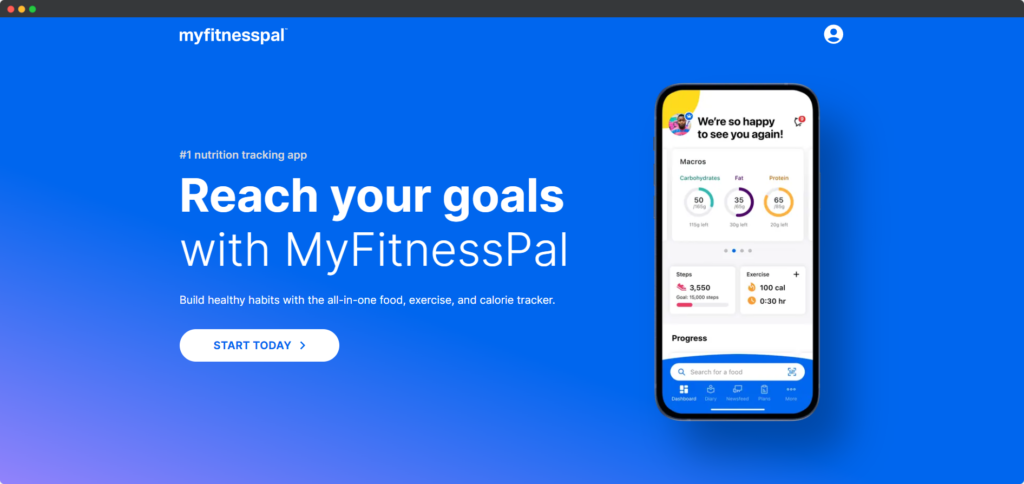
By providing this tool for free, MyFitnessPal attracts a large user base interested in health and wellness.
The app also offers premium features like advanced tracking and personalized insights, which users can access through a paid subscription.
This freemium model has helped MyFitnessPal become a leading platform in the health and wellness space, driving growth through a combination of valuable free services and premium upgrades.
7. Free YouTube SEO Tools from Maxsemo
Maxsemo offers a suite of free YouTube SEO tools designed to help content creators. Marketers, and business owners optimize their YouTube videos for better visibility and engagement.
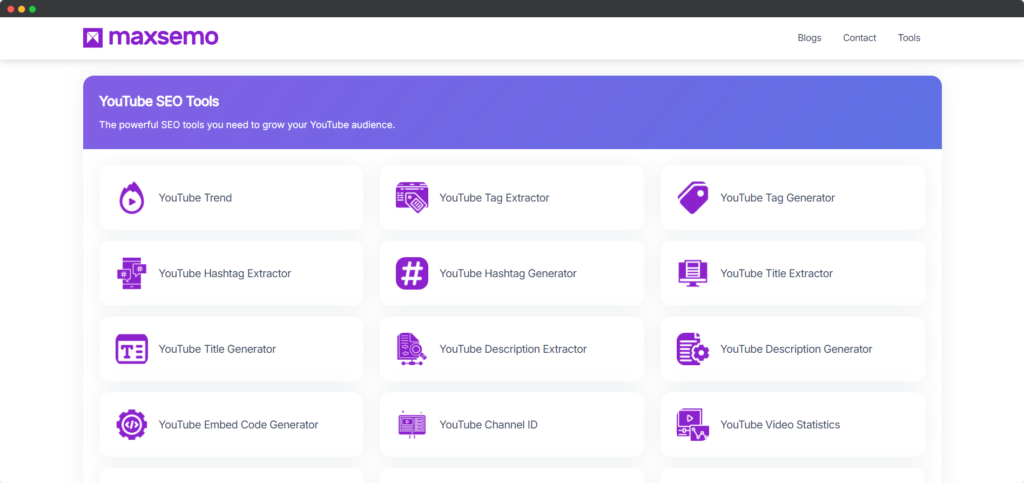
By providing tools that assist with keyword research, tag generation, and performance analysis, Maxsemo attracts marketers and business owners looking to enhance their channel’s reach.
This free resource not only drives traffic to Maxsemo but also establishes the platform as a valuable ally for digital marketers, fostering trust and encouraging users to explore more of Maxsemo’s offerings.
Different Types of Digital Assets for ‘Engineering as Marketing’ Campaigns
In an Engineering as Marketing campaign, the key to success lies in creating digital assets that provide value, solve problems, and attract your target audience.
These assets come in various forms, each serving a distinct purpose in your marketing strategy.
Below are some of the most effective types of digital assets you can create as part of an Engineering as Marketing campaign:
1. Free Tools and Calculators
Creating a tool or calculator that helps users solve a specific problem can drive significant traffic to your website.
For instance, if you are promoting your digital marketing consulting services through your website then you consider adding a free tool that lets your target audience to calculate their marketing budget.
These tools can be as simple or complex as needed, depending on your audience’s needs.
Examples: SEO analysis tools, ROI calculators, or budget planners.
2. Interactive Quizzes and Assessments
Quizzes and assessments engage users by offering personalized results or recommendations based on their inputs.
They can be used to educate your audience or guide them toward a specific product or service.
Examples: Fitness assessments, marketing readiness quizzes, or product recommendation engines.
3. Educational Courses and Tutorials
Offering free educational content like courses, tutorials, or how-to guides can position your brand as an authority in your industry.
This content can be delivered through a dedicated platform or integrated into your website.
Examples: Online courses on digital marketing, coding tutorials, or financial literacy programs.
4. Content Generators and Templates
Content generators and customizable templates provide immediate value by helping users create professional-quality content quickly and easily.
These tools often drive repeat traffic as users return to use the tool again.
Examples: Social media post generators, blog post idea generators, or email marketing templates.
5. APIs and Developer Tools
Providing APIs (Application Programming Interfaces) or other developer tools allows users to integrate your technology into their own projects, driving adoption and creating a community of users around your product.
Examples: Payment processing APIs, data analysis libraries, or integration frameworks.
6. Free Software and Apps
Offering a freemium software product or app can attract a large user base. Users get access to basic features for free, while advanced features are offered as part of a premium package, driving conversions over time.
Examples: Antivirus software, project management apps, or design tools.
7. Resource Libraries
Curating a library of valuable resources, such as eBooks, whitepapers, templates, or research reports, can attract users looking for in-depth knowledge.
These resources can be gated, requiring users to provide contact information, thereby generating leads.
Examples: Financial planning guides, industry trend reports, or downloadable design templates.
8. Interactive Infographics and Data Visualizations
Interactive infographics and data visualizations make complex information more accessible and engaging.
They can be shared widely, driving traffic and boosting your brand’s visibility.
Examples: Interactive maps, data dashboards, or timeline visualizations.
Steps to Implement an Engineering as Marketing Campaign
Launching an Engineering as Marketing campaign requires careful planning and execution to ensure that the digital assets you create provide real value and effectively attract your target audience.
Below are the key steps to successfully implement an Engineering as Marketing campaign:
1. Identify Your Audience’s Needs
The first step in any Engineering as Marketing campaign is to thoroughly understand your target audience.

Identify the pain points, challenges, or needs that your audience faces, and consider how your expertise or technical capabilities can help address these issues.
The more specific you can be, the more effective your campaign will be in attracting and engaging the right users.
Action Step: Conduct surveys, interviews, or market research to gather insights into your audience’s most pressing problems.
2. Define Your Objectives
Clearly define what you want to achieve with your Engineering as Marketing campaign.
Your objectives could range from increasing brand awareness and generating leads to driving website traffic or building customer loyalty.
Understanding your goals will help you design the right digital assets and measure the success of your campaign.
Action Step: Set specific, measurable, attainable, relevant, and time-bound (SMART) goals for your campaign.
3. Brainstorm and Develop the Digital Asset
Based on your audience’s needs and your campaign objectives, brainstorm ideas for the digital asset you want to create.
This could be a tool, a resource, a piece of content, or any other digital product that will provide value to your audience.
Collaborate with your technical team to ensure the feasibility of the project and to outline the development process.
Action Step: Create wireframes, prototypes, or mock-ups to visualize the digital asset and plan its development.
4. Build and Test the Asset
Once the concept is finalized, move into the development phase. Work closely with your engineering or technical team to build the digital asset.

Ensure that it is user-friendly, intuitive, and solves the problem you set out to address. Testing is crucial at this stage to identify any bugs or usability issues before launching.
Action Step: Conduct user testing with a small group from your target audience to gather feedback and make necessary adjustments.
5. Launch the Asset and Promote It
After thorough testing, it’s time to launch your digital asset.
Make sure to integrate it seamlessly into your website or platform and ensure it’s easy for users to find and use.
Promotion is key to driving traffic and engagement, so leverage your marketing channels—such as social media, email marketing, and partnerships—to spread the word about your new tool or resource.
Action Step: Create a comprehensive marketing plan that includes organic and paid strategies to promote your digital asset.
6. Measure and Analyze Performance
Once your digital asset is live, it’s essential to track its performance against the objectives you set earlier.
Use analytics tools to monitor metrics such as user engagement, lead generation, conversion rates, and overall traffic. Analyze the data to understand what’s working and where improvements can be made.
Action Step: Set up dashboards and regular reporting to keep track of key performance indicators (KPIs) and adjust your strategy as needed.
7. Iterate and Improve
Based on the data and feedback you receive, continuously iterate on your digital asset to enhance its effectiveness.
Adding new features, improving the user experience, or expanding its functionality can help keep your audience engaged and attract new users over time.
Action Step: Implement a feedback loop where users can suggest improvements, and use this input to guide future iterations.
Common Challenges (with Solutions) When Implementing an Engineering as Marketing Campaign
While Engineering as Marketing can be a highly effective strategy, it comes with its own set of challenges.
Successfully navigating these challenges is crucial to ensuring that your campaign delivers the desired results.
Below are some common obstacles you may encounter when implementing an Engineering as Marketing campaign.
1. Identifying the Right Problem to Solve
One of the most significant challenges is pinpointing the exact problem that your digital asset should address.
If the problem is too broad, your solution may not resonate with users; if it’s too niche, it might not attract a large enough audience.
Challenge: Striking a balance between specificity and broad appeal can be difficult, and misjudging this can lead to low engagement and wasted resources.
Solution: Conduct thorough market research and engage directly with your target audience to ensure you’re addressing a relevant and impactful problem.
2. Allocating Technical Resources
Creating digital tools or platforms often requires significant technical expertise and resources.
For many companies, especially smaller ones, allocating sufficient engineering and development resources to the project can be a challenge.
Challenge: Limited technical resources can lead to delays, increased costs, or compromises in the quality of the final product.
Solution: Prioritize your project within your overall development pipeline and consider outsourcing certain tasks or using existing platforms and frameworks to speed up the process.
3. Ensuring User Adoption
Even the most well-designed tool can fail if users don’t adopt it.
Convincing your target audience to try out and regularly use your digital asset can be challenging, particularly in a crowded market where many tools compete for attention.
Challenge: Low adoption rates can undermine the effectiveness of your campaign and reduce your return on investment.
Solution: Focus on creating a user-friendly experience, promote your tool effectively through multiple channels, and provide clear value propositions that encourage users to engage with the asset.
4. Measuring Success
Another common challenge is accurately measuring the success of your Engineering as Marketing campaign.
Determining the right metrics and tracking them effectively can be complex, especially if your campaign’s goals are multifaceted.
Challenge: Without clear and accurate metrics, it’s difficult to assess whether your campaign is delivering the intended outcomes, such as lead generation or increased brand awareness.
Solution: Define specific key performance indicators (KPIs) from the outset and use analytics tools to monitor these metrics continuously, making adjustments as needed.
5. Maintaining and Updating the Asset
Once your digital asset is launched, it’s important to keep it updated and relevant. However, ongoing maintenance requires time and resources, which can be challenging to manage alongside other business priorities.
Challenge: Neglecting updates or failing to adapt to user feedback can lead to a decline in engagement and the eventual obsolescence of the asset.
Solution: Establish a maintenance plan that includes regular updates, bug fixes, and new feature rollouts based on user feedback and evolving market trends.
6. Balancing Free and Paid Features
For those using a freemium model, balancing what to offer for free versus what to reserve for paid users can be tricky.
Offering too much for free might reduce the incentive to upgrade, while offering too little could discourage users from engaging with the tool altogether.
Challenge: Finding the right mix of free and paid features to maximize both user engagement and revenue generation.
Solution: Conduct A/B testing and gather user feedback to fine-tune the balance, ensuring that your free offering provides value while the premium features offer compelling reasons to upgrade.
Tips to Promote Your Newly Created Digital Asset
Once you’ve developed a valuable digital asset (whether it be a free tool or an educational resource) as part of your Engineering as Marketing campaign, the next critical step is to effectively promote it.
Proper promotion ensures that your target audience discovers, engages with, and shares your asset, maximizing its impact and driving your marketing goals.
Here are some tips to help you promote your newly created digital asset:
1. Leverage Social Media Channels
Craft engaging social media posts with eye-catching visuals, clear calls-to-action, and links to your digital asset.
Engage (comment or reshare) with those social media posts in which your digital asset can be presented as a solution. You can find these social media posts through hashtag search.

You can also leverage niche social media groups where you can showcase your digital asset as a solution.
You can consider exploring niche groups in Reddit (called subreddits) for the same.
Consider using paid social media ads to reach a broader audience or target specific demographics. This is pretty much optional.
2. Incorporate Email Marketing
Email marketing allows you to promote your digital asset directly to your subscribers.
Create an email campaign highlighting the benefits of your digital asset, including a clear call-to-action that encourages recipients to explore and use your tool or content resource.
Segment your email list to tailor your messaging to different audience segments.
3. Optimize for Search Engines (SEO)
Optimize the landing page or website where your asset is hosted with relevant keywords, meta tags, and high-quality content.
Use SEO best practices like optimizing page load speed, including keyword-rich titles and descriptions, and creating high-quality backlinks. Consider creating a blog post or content series around the asset to further enhance its SEO.

Diversify your SEO efforts to other search platforms that include Bing, Yahoo, and ofcourse, YouTube.
You can also check out this article on how to use SEO to build brand awareness for your website/business.
4. Feature it on Your Website
Your website is a central hub for your audience, so make sure your digital asset is prominently featured.
This could be through a dedicated landing page, a homepage banner, in the main navigation menu, or a call-to-action button.
You can place banners or insert links in traffic-generating pages (like blogs, case studies, testimonials, etc) or publish blogs around your digital asset.
Make sure your website is powered by a content delivery network (CDN) service
5. Collaborate with Influencers or Partners
Partnering with influencers or industry experts can extend your reach and lend credibility to your digital asset. Influencers can introduce your asset to their followers, driving traffic and increasing visibility.
Identify influencers whose audience aligns with your target market, and collaborate on content or campaigns that highlight your digital asset.
You can start with nano-creators or nano-influencers who create content for their highly-niche focused audience. Reach out to them after doing thorough research on their profile.
6. Use Paid Advertising
Paid advertising can accelerate the reach of your digital asset, especially when targeting specific demographics or interests.

Platforms like Google Ads, Facebook Ads, or LinkedIn Sponsored Content can be effective channels for promotion.
Create targeted ad campaigns that focus on the unique value proposition of your digital asset. A/B test different ad creatives and ad copy to optimize performance and maximize your ROI.
7. Create Engaging Content Around the Asset
Developing content that highlights the benefits, features, and use cases of your digital asset can help drive interest and engagement. This content can take the form of blog posts, case studies, videos, or infographics.
For example, produce a blog series that explores different aspects of the asset, or create a how-to video that guides users through its features.
Share this content across your channels to generate interest and drive traffic. Repurpose high-performing content that will greatly reduce your content creation time.
You can also promote the digital asset via your company’s employee advocacy campaigns.
8. Leverage Online Communities and Forums
Online communities and industry-specific forums are excellent places to share your digital asset with an audience that’s likely to find it useful. Engage with these communities by providing value and introducing your asset as a helpful resource.
For instance, participate in discussions on platforms like Reddit, Quora, or industry-specific forums. Share your digital asset as a solution to relevant questions or topics, and be sure to provide context and value in your contributions.
9. Host Webinars or Live Demos
Hosting a webinar or live demo allows you to showcase your digital asset in action. This not only demonstrates its value but also provides an opportunity to engage directly with your audience and answer any questions they may have.

Promote the webinar through your email list, social media channels, and website. During the event, highlight key features of your digital asset and provide real-life examples of how it can solve your audience’s problems.
10. Encourage User Reviews and Testimonials
Social proof can be a powerful motivator for potential users. Encourage those who have used your digital asset to leave reviews or provide testimonials that you can share across your marketing channels.
Here’s one tip.
Reach out to early adopters and ask for their feedback or testimonials.
Feature these user-generated content on your website, in marketing emails, and on social media to build trust and encourage others to try your asset.
Final Thoughts
Engineering as Marketing is more than just a strategy; it’s a powerful approach to growth that leverages your technical expertise to create valuable assets for your audience.
By thoughtfully implementing and promoting these digital tools, you can solve real problems, engage your target market, and drive meaningful business results.
Whether you’re building a simple tool or a comprehensive platform, the key is to focus on providing genuine value, continuously improving, and aligning your efforts with your overall marketing goals.
Embrace Engineering as Marketing, and you’ll unlock a new pathway to sustainable growth and success.
